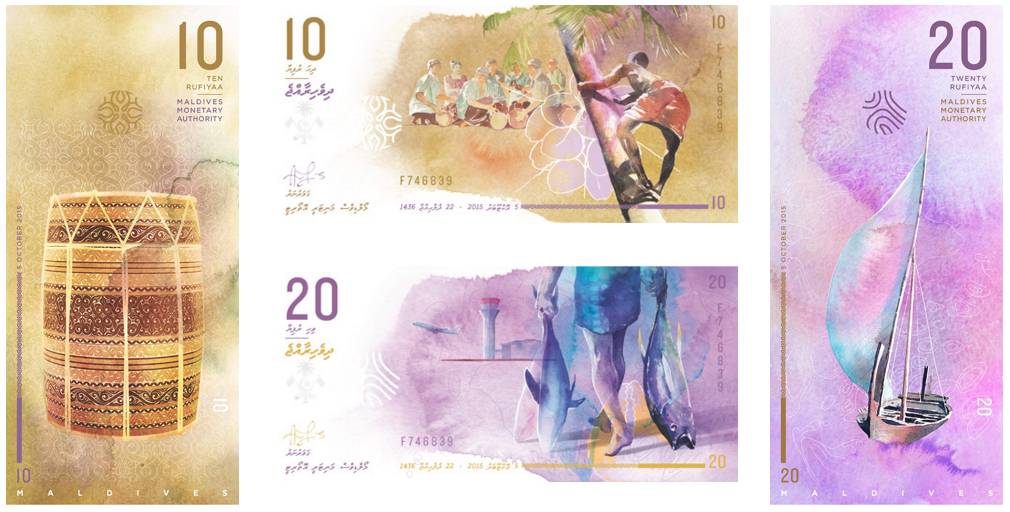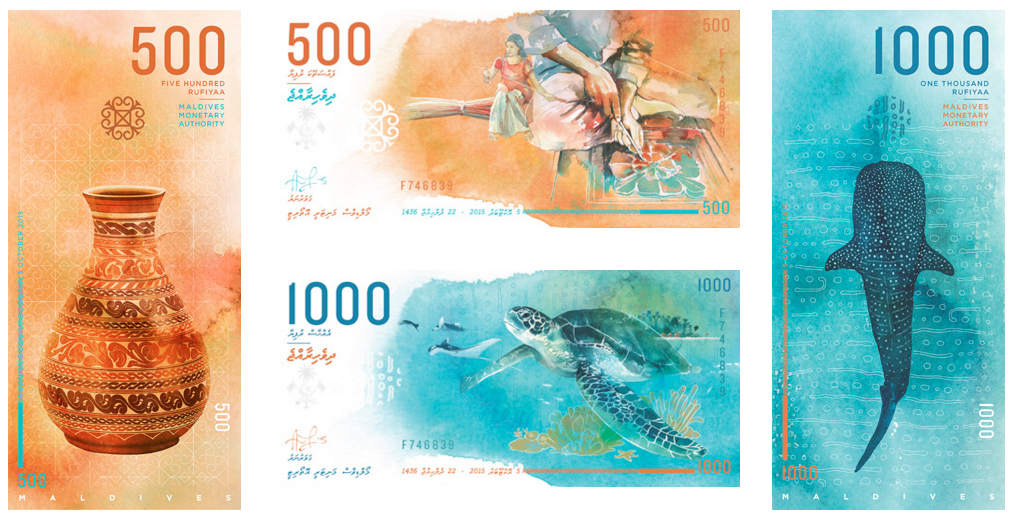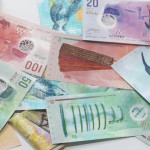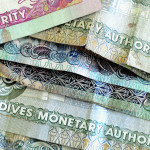The Maldives Monetary Authority (MMA) unveiled last night the ‘Ran Dhihafaheh’ (Golden 50) banknotes designed to mark the country’s golden jubilee of independence.
The new series, designed by Maldivian artist Abdulla Nashath, replaces notes introduced in 1983.
The new notes “represents the Maldives, and the identity of Maldivians” and “attempts to encapsulate all the innate factors that define our country, and our ancestral identity,” the central bank said.
Speaking at a ceremony held at the Dharubaaruge convention center, MMA Governor Dr Azeema Adam said the new notes were designed with enhanced security features to prevent counterfeiting.
She also assured the public that the introduction of the notes next month will not affect inflation. The notes will not be printed in excess of the amount of cash currently in circulation. “For example, we will release a new MVR100 note after the old MVR100 note is returned,” Azeema said.
The new Maldivian rufiyaa notes, are the first banknotes to be signed by a woman governor, and were designed in the denominations of 10, 20, 50, 100, 500, and the newly introduced 1,000. Each note has a different colour scheme and conceptual theme.
The MVR5 note will be discontinued and introduced as coins.
The notes will also be marked in braille, making its denomination identifiable to the visually impaired.
The MMA explained that “mixed media” was used as the main design in a combination of traditional acrylic or water colour with a semi-realistic style used in the colouring.

The MVR10 note represents “Maldivian culture and traditions” with drawings of a toddy rapper and a group of men and women playing boduberu. The drawing of the drum is based on the oldest drum displayed at the national museum. The background pattern was made using designs on the traditional drum.
The MVR20 note symbolises “our industrial and economic progress” with drawings of a fisherman carrying a skipjack tuna and a yellowfin tuna, the international airport, an image of a cowry shell, and a traditional sailboat. The background pattern represents an aerial view of islands and reefs.

The theme of the MVR50 note is “our unity and Islamic values” with drawings of a boy reciting the Quran, a group of men pulling a boat into the water, and the minaret of the Friday mosque in Malé. The background pattern is based on stone carvings in the ancient mosque.
The MVR100 represents “nationalism and our native language” with drawings of a woman in a traditional Maldivian dress working on a neckline threading, men and women in traditional attire, and copperplates of the early Dhivehi script. The background pattern was made using the old Dhives alphabet.

The MVR500 note represents “our ancestral craftsmanship” with drawings of a wood worker fashioning an intricate design using mallet and chisel, a woman making an ekel broom, and a traditional hand-carved vase with lacquer work. The background design is based on the pattern on traditional hand-weaved mats made out of hay.
The MVR1,000 note symbolises “the beauty of our surroundings” with drawings of a green turtle, a luxury resort, manta rays, corals, and a whale shark. The background design is based on the pale yellow spot and striped pattern on the skin of whale sharks.
Nearly 200 Maldivians had submitted proposals in a competition to select the new banknote design. Nashath’s submission was chosen by an advisory committee after three rounds of judging.
The new note series were printed on polymer by De La Rue, one of the world’s largest commercial banknote printers and passport manufacturers. The UK-based company has been printing Maldivian banknotes since 1947.
The central bank plans to introduce the new notes through the banking system as well as replacement schemes in December and expects to replace all the old notes within five years.























